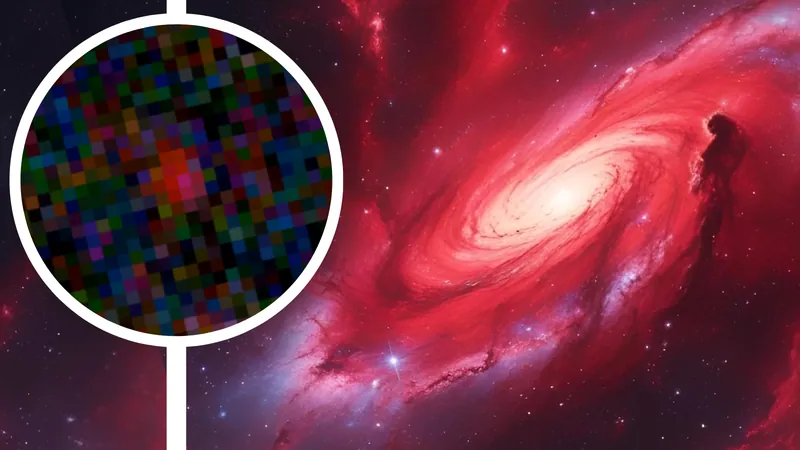
'Cosmic Miracle!' James Webb Space Telescope Spotlights Earliest Galaxy Yet
2025-05-30
Author: Mei
A New Era of Cosmic Discovery
The James Webb Space Telescope (JWST) is redefining our understanding of the universe with groundbreaking discoveries in galaxy formation. Recently, it spotted a galaxy that existed just 280 million years post-Big Bang, an achievement dubbed a "cosmic miracle." This groundbreaking find, named "MoM z14"—short for "Mother of all early galaxies"—is a stunning testament to the power of this $10 billion NASA marvel.
The Most Distant Galaxy Ever Detected
According to team member Pieter van Dokkum from Yale University, this discovery allows us to peer closer to the universe's infancy. "Currently, this is the most distant object known to humanity, representing a moment in time close to the Big Bang. Sharks have roamed the Earth longer than this galaxy has existed!"
What is Redshift?
The JWST shines particularly in observing galaxies at high redshifts—an astronomical phenomenon where light waves are stretched, causing distant objects to appear redder as their light travels through expanding space. The further away the galaxy, the greater the redshift. MoM z14 boasts a redshift of 14.44, surpassing the previous record holder, JADES-GS-z14-0, which had a redshift of 14.32.
Unraveling the Mysteries of MoM z14
This remarkable find not only sets a new record but also hints at a more complex narrative. Van Dokkum stated that JWST was not anticipated to uncover such ancient galaxies at this early stage of its mission, yet it has already revealed over 100 relatively bright galaxies from this formative period.
MoM z14 is estimated to be about 50 times smaller than our Milky Way. Analysis showed emission lines indicating the presence of elements like nitrogen and carbon—unexpected for such an early galaxy, as the earliest stars primarily consisted of hydrogen and helium.
The Implications of Element Discovery
The presence of nitrogen and carbon suggests that earlier galaxies may still be lurking in the cosmos. These heavier elements signify that MoM z14 may not be among the very first galaxies formed, hinting at potential discoveries of even earlier cosmic structures. "This galaxy could belong to a new wave of 'normal' galaxies, which began to develop heavier elements due to stellar fusion and supernovae," Van Dokkum explained.
Future Discoveries Await
Looking ahead, van Dokkum is optimistic about JWST's capabilities and foresees the possibility of even older galaxies emerging from its observations, potentially achieving redshifts of 15 or 16. The team, led by Rohan Naidu from MIT, celebrates this milestone as a significant step in our quest to decode the early universe.
"In a project like this, we always hope for a 'miracle' that our candidates are true early galaxies and not false leads. While we longed for groundbreaking discoveries, none of us anticipated breaking the redshift record!" Van Dokkum concluded.



 Brasil (PT)
Brasil (PT)
 Canada (EN)
Canada (EN)
 Chile (ES)
Chile (ES)
 Česko (CS)
Česko (CS)
 대한민국 (KO)
대한민국 (KO)
 España (ES)
España (ES)
 France (FR)
France (FR)
 Hong Kong (EN)
Hong Kong (EN)
 Italia (IT)
Italia (IT)
 日本 (JA)
日本 (JA)
 Magyarország (HU)
Magyarország (HU)
 Norge (NO)
Norge (NO)
 Polska (PL)
Polska (PL)
 Schweiz (DE)
Schweiz (DE)
 Singapore (EN)
Singapore (EN)
 Sverige (SV)
Sverige (SV)
 Suomi (FI)
Suomi (FI)
 Türkiye (TR)
Türkiye (TR)
 الإمارات العربية المتحدة (AR)
الإمارات العربية المتحدة (AR)